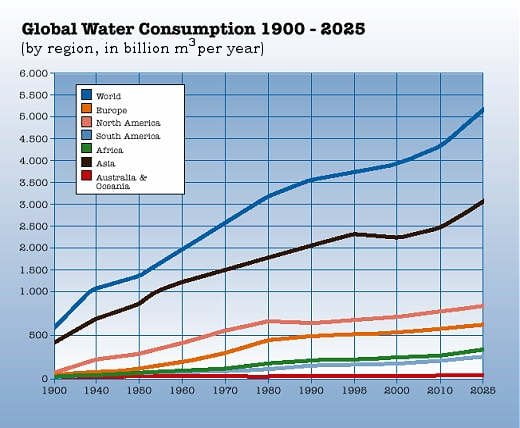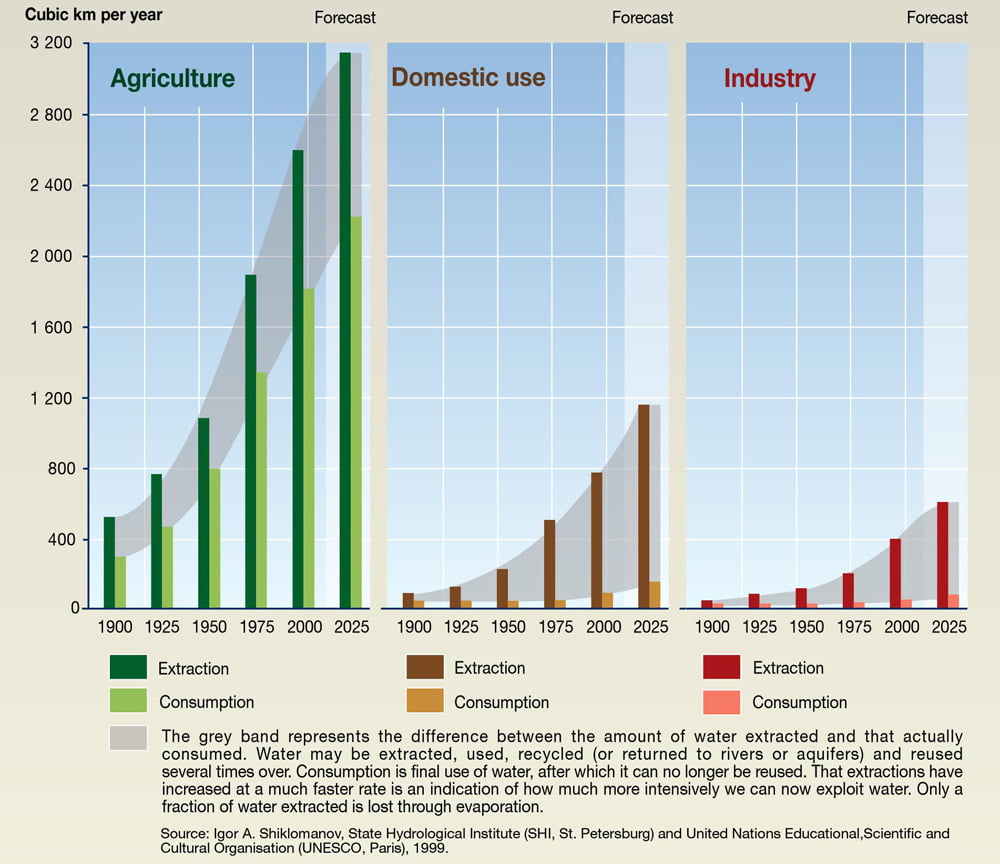Access to water is seen as a fundamental human right and is taken for granted by most of us. However, due to the rapidly growing world population and the ever increasing demand, water is increasingly becoming a valuable and sought-after resource. 2/3 of the earth’s surface is covered with water. However, the following breakdown looks less promosing:
97.5% of the world’s water resources are saltwater resources and 2.5% of the world’s water resources are freshwater resources. The 2.5% freshwater is divided into 68.9% ice glaciers, 30.8% groundwater and only 0.3% of the freshwater is found in lakes and rivers.
The United Nations expect that the world will use up to 40% more water in 2025 than in 2015. The growing population and changing eating habits in particular will ensure a steadily increasing demand for water over the next few decades. Additionally, the gradual improvement in the standard of living in the emerging countries means that more water will be used. The western lifestyle, which is very water-intensive, is used as an orientation. According to UNESCO, the inhabitants of the industrialized countries use around ten times as much water per day as the inhabitants of the emerging and developing countries. Since agriculture still accounts for 70% of the world’s water consumption, the increasing population and the associated rising demand for food are signs of an increasing water consumption.


Climate Change and Years of Underinvestments as additional Drivers of Water Scarcity
The population is growing steadily and so is the demand for water-intensive eating habits. Asia and Africa in particular are adapting more and more to the western lifestyle, which, however, is very water-intensive. Another aspect that has been overlooked so far, but continues to challenge the water crisis, is climate change and its effect on water supply. The World Bank predicted in 2010 that due to a rise in temperature of 2 degrees between 2020 and 2050, up to 20 billion dollars would have to be invested annually in measures for sustainable water supply. One overlooked problem here is the worldwide melting glaciers which serve as drinking water reservoirs in many countries. However, the consequences of glacier melting for the population in individual countries and regions are enormous. The meltwater has been used as drinking water for centuries and is also used in agriculture. The consequence of the melting glaciers around the world is that the reliable and stable drinking water storage system will be eliminated with a high degree of certainty by 2050. The inhabitants of the Andes and the Himalayas are particularly hard hit.
In the western countries, however, no real major public investments have been made in water infrastructure for many years. The renovation and modernization of an inefficient and outdated infrastructure is urgently required over the next few years. Almost 30 million litres of water seep into the earth every day. The waterworks in some countries are also outdated and in need of renovation. Large parts of the water infrastructure in the USA are over 100 years old, some even over 200 years. For this reason, the American environmental protection agency (EPA) estimates that around 138 billion dollars will have to be invested annually in the urgently needed modernization of the American water infrastructure over the next few years. The OECD estimates that between 2010 and 2030 more than 40 trillion dollars will have to be invested in expanding and maintaining the entire infrastructure worldwide. The water sector has the highest demand with an annual investment volume of 900 billion dollars, followed by road construction with 270 billion dollars and energy supply with 210 billion dollars. Supplying the world population with drinking water is obviously one of the key tasks of the 21st century. That is why a billion-dollar market has developed around the topic of water. In light of the scarcity of water due to a growing world population, years of underinvestment and climate change, water is likely to continue to gain in importance economically and socially.

